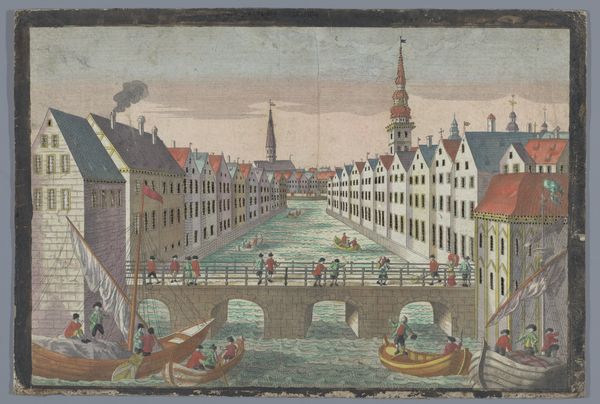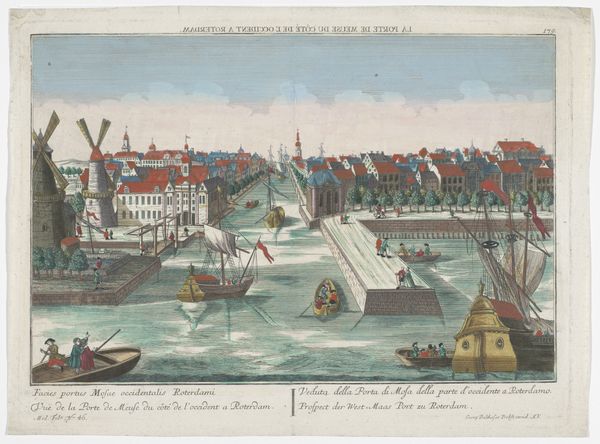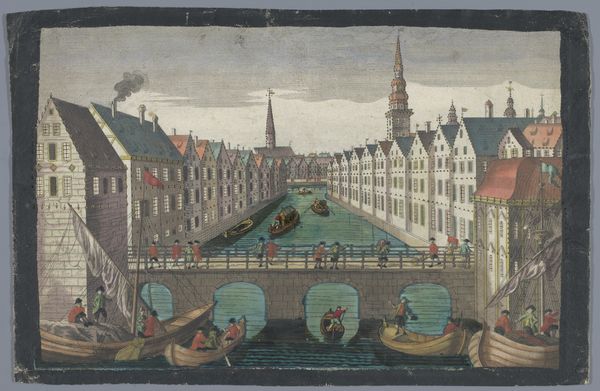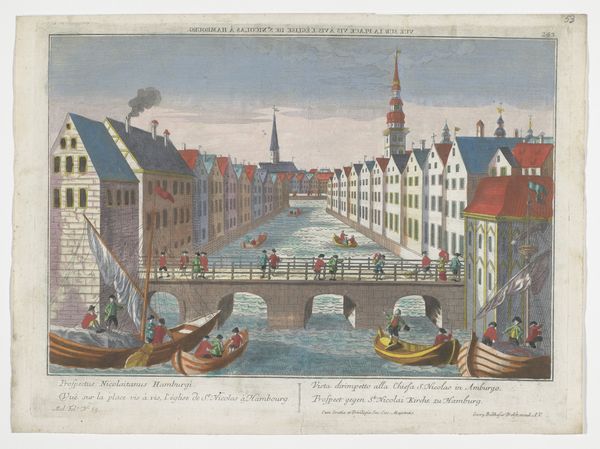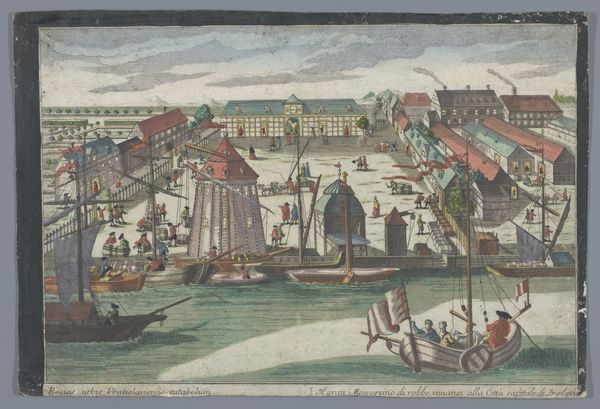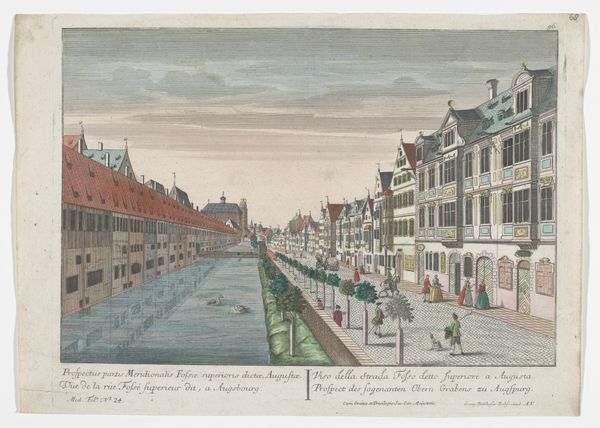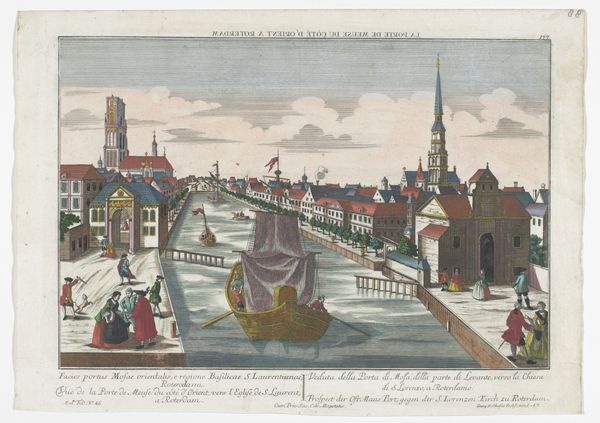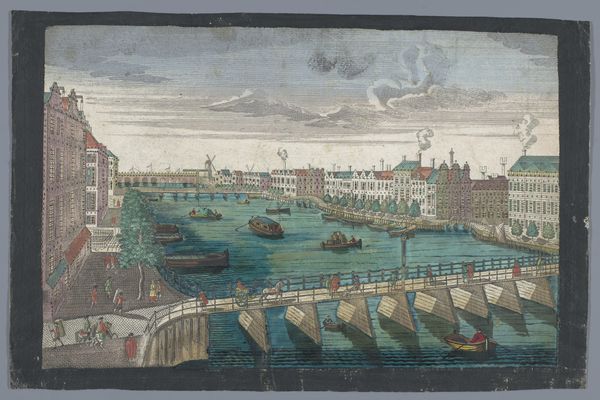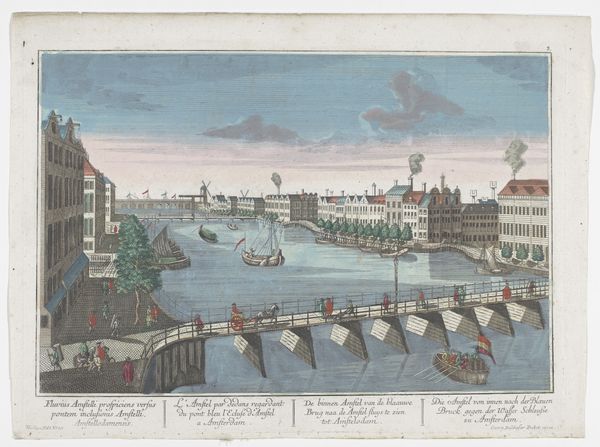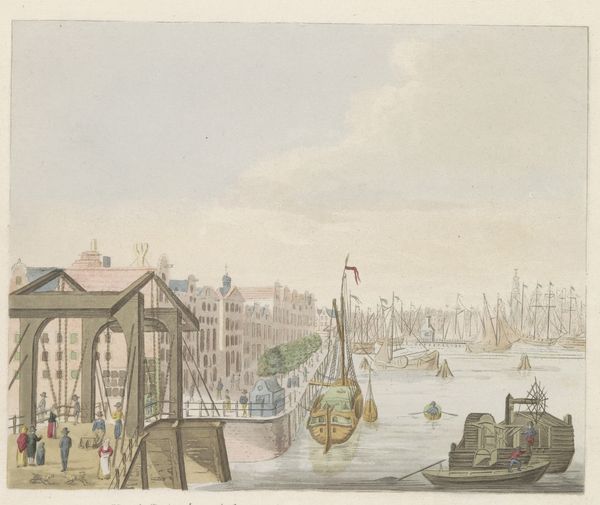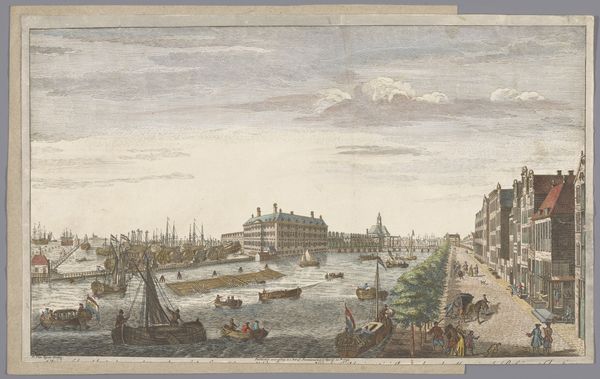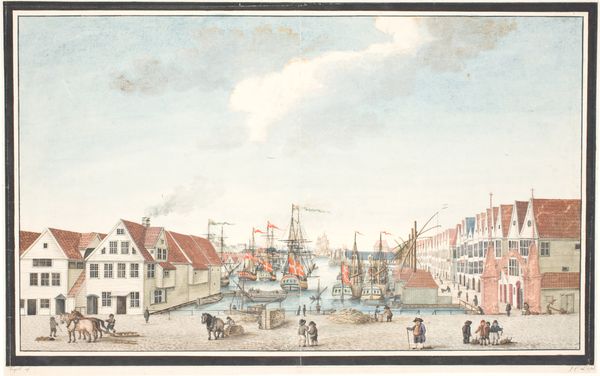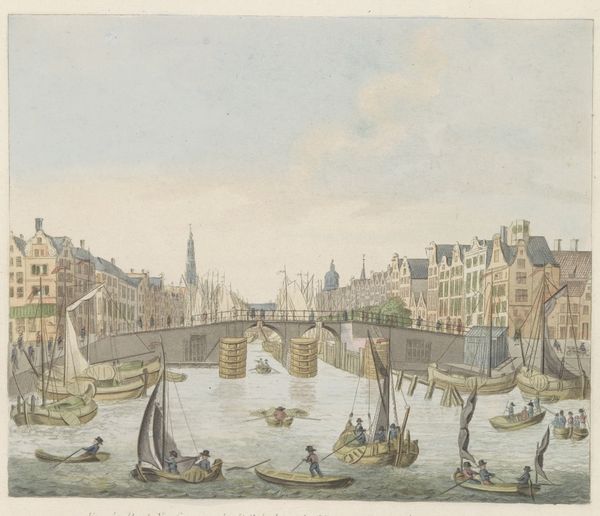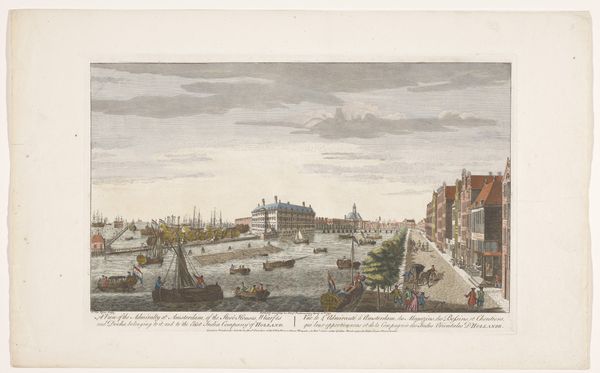
Gezicht op een gracht in de omgeving van de Ketelpoort te Delft 1742 - 1801
0:00
0:00
Dimensions: height 323 mm, width 446 mm
Copyright: Rijks Museum: Open Domain
Curator: This watercolor print offers a delightful scene of Delft: "Gezicht op een gracht in de omgeving van de Ketelpoort te Delft," likely created sometime between 1742 and 1801. What strikes you first about it? Editor: It's the waterway dividing the scene so cleanly in two. The reflection on the water really emphasizes a world in perfect balance. Are there any recurring visual motifs? Curator: The prevalence of right angles, would be difficult to miss! From the buildings themselves, rigidly ordered, to the orthogonal perspective emphasizing the canal’s straight path. It is reminiscent of precise architectural renderings more than spontaneous depictions. Let’s consider its medium. Watercolors and colored pencils, printed--these materials were readily accessible to a growing middle class, documenting their urban lives. It speaks to the expanding culture of observation. Editor: And it feels carefully observed. See how the artist plays with scale, placing human figures throughout to add dimension and importance to the harbor setting? Consider the flag, repeatedly flown, almost a beacon indicating freedom. What feelings did those ships entering the port invoke? Were they carrying enslaved persons, spices, silks, or simply an average haul of mundane manufactured wares? Curator: The Dutch Golden Age and its mercantile spirit, no doubt. The ships lining the canals, bustling with activity, represented economic power. These symbols represent trade and commerce. Also, given Delft's location and relationship to waterways, they served not just as modes of commerce, but avenues of movement, transition, perhaps escape. The print medium made these available to the emerging middle class in expanding Dutch urban centres like Delft. Editor: Perhaps the symbolism becomes complicated when viewed through that economic lens, given the role that the waterways, its cargo and ships played. Curator: Very true, especially considering the ships and Delft's major participation in the trading. What do you make of it now, knowing more of this picture's origins and means? Editor: Well, that simple divide that at first seemed charming now feels a bit… ominous. More weighted. It is much more layered than previously.
Comments
No comments
Be the first to comment and join the conversation on the ultimate creative platform.
